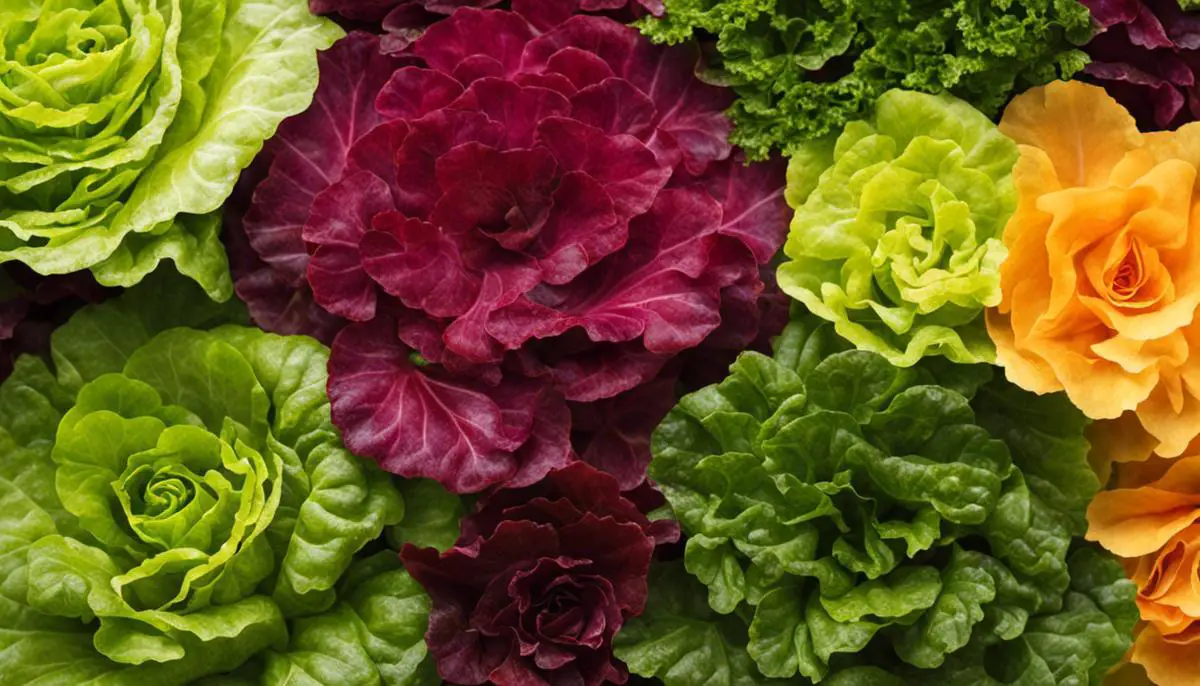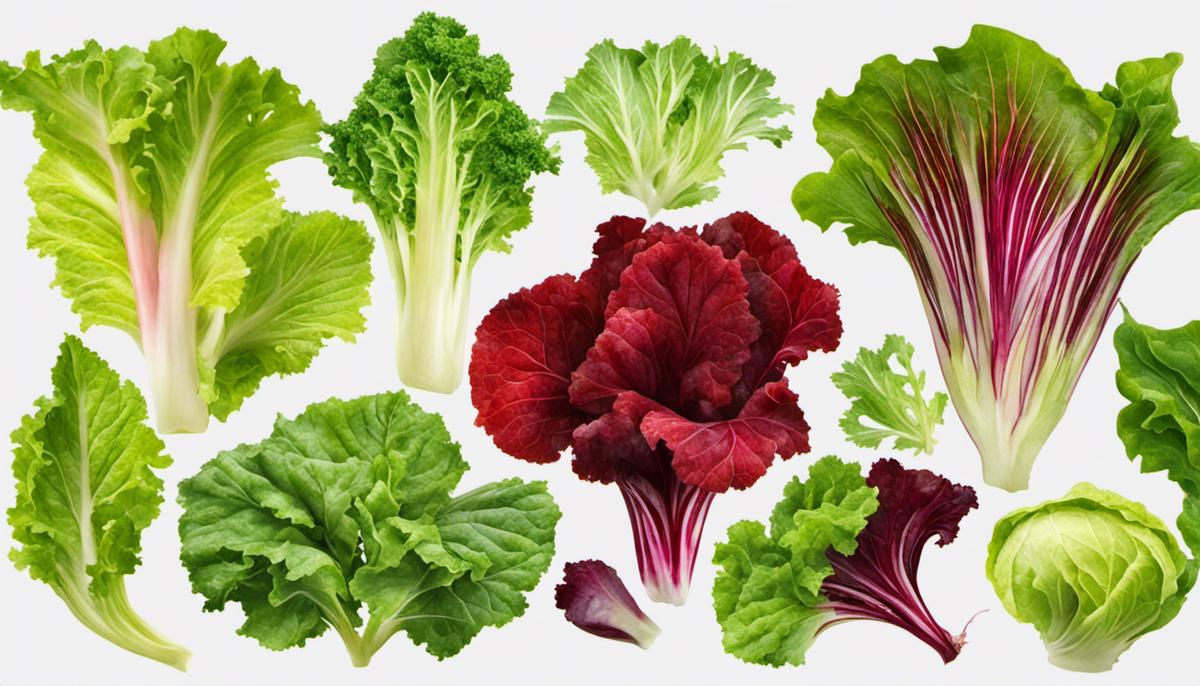The brilliance of the humble lettuce resides in its simplicity to cultivate, its expansive variety and, most profoundly, its capacity to provide fresh, home-grown nutrition to our dining tables. Regardless of your experience as a gardener, an understanding of lettuce varieties, their unique cultivation needs, and the pertinent care needed post-planting, can directly improve your harvest outcome. Our journey begins with an in-depth look into the types of lettuce available for cultivation – from the crispy romaine, the sweet and tender butterhead, to the delicate summer crisp and flavorful loose-leaf lettuces.
Understanding Lettuce Varieties
Picking your Leafy Greens: Comparing Lettuce Varieties for the Perfect Garden Harvest
Whether you’re a seasoned gardening expert or a fresh-faced green thumb, selecting the right type of lettuce for your garden can be a little overwhelming. With a plethora of variants available, picking the one that suits your garden’s environment and your culinary needs can be a challenge. But fear not! Let’s dig into the broad world of lettuce and determine the best type for your garden.
Reader Poll: What online courses would interest you?
First on the menu, we have the highly popular Iceberg lettuce. Known for its crisp texture and mild taste, it has been a long-standing favorite among salad enthusiasts. It forms a dense, spherical head and boasts a high resistance to cold weather. For those with cooler gardens or who love adding a crunchy spin to their salads, Iceberg lettuce makes for an excellent choice.
The Romaine or cos lettuce is another strong contender. Borrowing its name from the Isle of Cos in Greece, this lettuce type is your go-to for creating classic Caesar salads. With long, sturdy leaves and a strong, slightly bitter taste, Romaine lettuce prefers cooler conditions but is more heat-tolerant compared to Iceberg. Gardeners with limited shade or those located in warmer regions may find Romaine lettuce a good fit.
Butterhead lettuce, encompassing variants like Boston and Bibb, is for those who savor soft, tender leaves with a slight sweetness. These lettuce types develop loose, open heads giving it a “buttery” quality, hence the name. Excellent for containers, raised beds, and small garden spaces, Butterhead lettuce is relatively hearty and easier to grow, making it an ideal choice for novice gardeners.
Subscribe to our newsletter!
Fancy a fascinating color palette in your garden? Give Red Leaf lettuce a try. It’s visually stunning with its reddish-purple leaves and frilled edges. Blossoming in loose leaf form, Red Leaf lettuce offers a mild, somewhat earthy flavor. Its tolerance towards heat makes it a star choice for growers in warmer climatic areas looking to add aesthetic and flavor to their gardens.
On the other hand, Green Leaf lettuce stands out for its ruffled, frilly leaves that are pleasing on the plate. This loose-leaf variety flourishes in a wide range of conditions, making it a versatile choice for any garden. It offers a slightly peppery taste that can add pizzazz to your salads and sandwiches.
Then we have the crisphead lettuce, similar to Iceberg but with closer-wrapped and more compact heads, resembling cabbage. It’s a great choice for those in love with Iceberg’s texture but looking for a more robust flavored lettuce.
Each lettuce variety has its unique growing conditions, taste, and texture profile. Now, armed with this knowledge, have a glance at your garden, think about your preferred flavors, and make a mindful choice. Great salads, cool crunches, and vibrant colors are only a harvest away! Happy gardening!

Site and Soil Preparation

Planting and Taking Care of Lettuce
Title: Cultivating Your Lettuce Garden Right: From Seed to Harvest
Every hobby-gardener knows, getting your hands on different lettuce varieties and creating your very own salad garden is an exciting journey. Lettuce is a cool-season crop, perfect for both spring and fall gardening. But how to plant and nurture lettuce? With the right steps and strategies, you can harvest fresh, crunchy lettuce leaves straight from your backyard.
First off, ensure your lettuce seeds are fresh as this crop doesn’t have a long shelf life. Unopened packages can last for about three years, but once opened, try to plant within the current gardening season.
Start planting the seedlings indoors for an early start, about 4-6 weeks before the last spring frost date. Sow the seeds 1/4 inch deep in seed-starting formula. Keep the formula moist, not overshooting to overly-wet, as lettuce roots thrive in moist conditions. A water mister is a great tool for this. Regular, consistent moisture in the seedbed also keeps the temperature down.
Temperature is fundamental. Lettuce seeds germinate best in cool conditions, between 40-60°F (4-15°C). Keep the seedlings indoors at a temperature between 55-65°F (13-18°C) for the optimal growth.
Once the seedlings grow two to four leaves, it’s time to transplant them outdoors. But before transplanting, there’s a process called hardening off, getting the plant accustomed to outdoor conditions slowly to prevent shock. Place them outside for fewer hours initially, then gradually increase outdoor exposure over a week.
The recommended planting position for lettuce plants is in full sun during cooler seasons, or in partial sunlight if temperatures are set to rise above 75°F (23°C). It’s also essential to avoid a spot with strong winds, as lettuce has shallow roots and can easily be uprooted.
Properly spaced plants are essential for a healthy lettuce garden. As a rule, leaf lettuce needs a 4-inch space, while head and romaine varieties require 8-16 inches, depending on the lettuce’s size.
Continuous watering is vital for lettuce growth. They need about 1 to 1.5 inches of water every week. Overwatering or underwatering can lead to poor growth and disease. Soaker hoses and drip irrigation systems are useful for providing consistent and adequate water supply.
One of the interesting aspects of lettuce is that you can have continual harvests. For leaf lettuce, picking outer leaves every week gives room for the inner leaves to grow, providing fresh lettuce for an extended period. For head types, wait until they’re firm and full-sized.
Don’t let pests dampen your enthusiastic gardening spirit! Aphids, slugs, and rabbits are common lettuce pests. Neem oil, organic mulches, or fencing can mitigate these issues.
Lastly, remember gardening is a learning process. Mistakes are not failures but lessons that lead to mastery. Get dirty, have fun and in no time, you’ll be enjoying fresh, home-grown salads that taste of your dedication and love for the hobby!

Undeniably, the rewarding experience of nurturing and harvesting your home-grown fresh lettuce, significantly enhances not just your meals, but also your understanding of the symbiotic relationship between soil and plant. Attentive care, the right soil selection, and proper site preparation create an environment conducive to growth. Your appetite for fresh lettuce, enhanced by your newfound gardening skills, will result in a bountiful harvest, allowing you to savor the fruits of your labor – one leaf at a time. After all, few culinary experiences can match the satisfaction of plucking your organically grown crisp lettuce from your garden, adding it to your salad bowl, and enjoying its freshness at your table. Let the art of lettuce growing begin!

